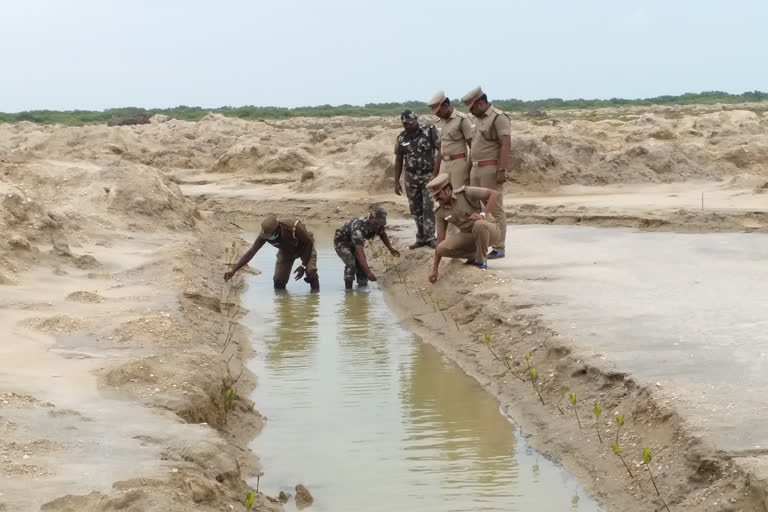Ramanathapuram: Tamil Nadu Forest Department has kickstarted the work to set up a 100-acre mangrove forest at Ramanathapuram that would provide various benefits ranging from biodiversity to ensure the safety of fishermen.
The Forest Department has set up a fishbone type canal covering 100 acres of land in Kadalur, Gandhigram and Karankadu, located near saline water bodies, and sowed mangrove seeds.
About 65% of Avicennia marina and 35% of Rhizophora seeds, brought from Hare island and Manoli island of the Gulf of Mannar, were sown in March. The plants have now grown to a height of one foot.
Mangroves are considered to play an important role in protecting coastal areas. Around 1.30 crore hectares of the world is covered with mangroves.
Mangrove forests cover an area of 4,985 km in India of which 45 km is in Tamil Nadu. In Tamil Nadu, after Muthupet and Pichavaram, mangroves are widely found in Ramanathapuram.
The mangroves that spread over an area of 550 hectares from Devipattinam to S.P. Pattinam in Ramanathapuram protects the fishermen from natural disasters.
Read: Prabhas adopts 1650 acres of Kazipalli Reserve Forest
The mangroves in Pichavaram saved the locals from a great disaster during the 2004 Tsunami. As mangroves help to increase biodiversity, it is also home to marine life like fish, crabs and prawns.
The mangroves along coasts reduce the salinity of water to a great extent, thereby providing fresh water to the villages nearby.
“It will take around 7-10 years for it to become a forest as mangroves have slow growth. These forests attract birds from around the world. The mangrove forest that was formed in Karankadu 30 years ago has now become a tourist spot. Similarly, Kadalur would turn into tourist spots in the future,” said Sathish, a Forest Department official.
He also informed that about 95% of the seeds sown have grown into plants and the greenery of Ramanathapuram would increase in the next 10 years.
“Our area has become a tourist destination due to the mangroves that were planted 30 years ago. The forest, formed based on the one in Pichavaram, provides fishermen with fishes and prawns,” said Gerald Mary, a resident of Karankadu.
The local fishermen express with joy that the forest, that prevents the boats from being damaged during disasters, would help to increase their income.
Also Read: Forest dept allowed to kill wild boars, Tamil Nadu govt tells HC



